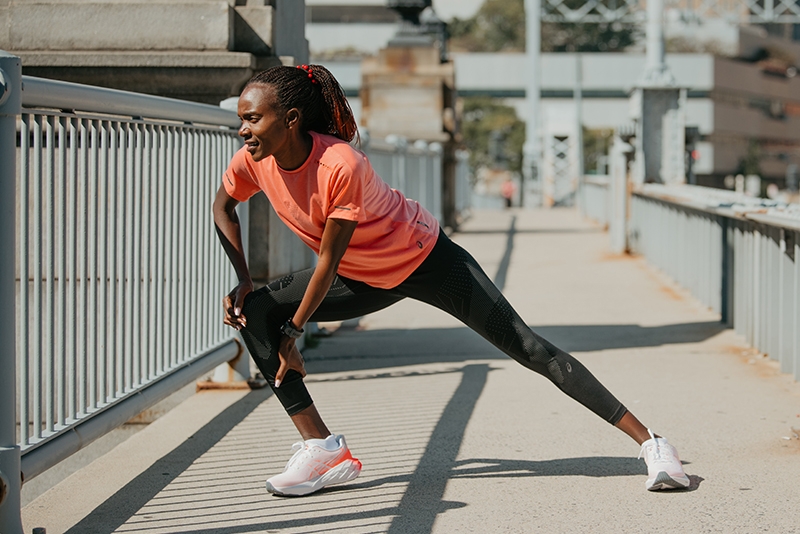Handling Common Running Discomforts: Reasons, Solutions, and Avoidance
As runners, we frequently experience various discomforts that can impede our performance and enjoyment of this exercise. From the devastating discomfort of shin splints to the unpleasant IT band disorder, these typical running discomforts can be irritating and demotivating. Comprehending the causes behind these disorders is vital in efficiently addressing them. By discovering the root factors for these running discomforts, we can discover targeted services and safety nets to guarantee a smoother and extra satisfying running experience (check this link).
Usual Running Pain: Shin Splints
Shin splints, an usual running pain, often arise from overuse or incorrect shoes during physical activity. This problem, medically called median tibial anxiety disorder, manifests as pain along the internal side of the shinbone (tibia) and prevails amongst athletes and runners. The repeated stress and anxiety on the shinbone and the tissues connecting the muscle mass to the bone leads to inflammation and pain. Joggers that swiftly increase the intensity or duration of their exercises, or those that have level feet or improper running techniques, are especially prone to shin splints.
To prevent shin splints, people should slowly raise the intensity of their exercises, put on suitable shoes with proper arch support, and keep flexibility and stamina in the muscular tissues surrounding the shin (running workout). In addition, incorporating low-impact activities like swimming or biking can aid maintain cardiovascular physical fitness while permitting the shins to heal.
Typical Running Discomfort: IT Band Disorder
Along with shin splints, another common running discomfort that professional athletes frequently come across is IT Band Disorder, a problem triggered by inflammation of the iliotibial band that runs along the outer thigh and knee. IT Band Disorder commonly manifests as pain outside of the knee, particularly throughout activities like running or cycling. The iliotibial band is a thick band of fascia that links the hip to the shin, and when it ends up being irritated or limited, it can massage versus the thigh bone, causing pain and discomfort.
Joggers experiencing IT Band Disorder might observe a painful or hurting feeling on the outer knee, which can intensify with continued activity. Elements such as overuse, muscle mass discrepancies, incorrect running form, or inadequate warm-up can add to the growth of this problem. To stop and relieve IT Band Disorder, joggers ought to concentrate on stretching and strengthening workouts for the hips and upper legs, appropriate footwear, gradual training development, and attending to any type of biomechanical issues that may be aggravating the trouble. Neglecting the signs of IT Band Syndrome can bring about persistent issues and prolonged recuperation times, highlighting the significance of very early treatment and proper monitoring methods.
Typical Running Discomfort: Plantar Fasciitis

Plantar Fasciitis can be credited to different aspects such as overtraining, inappropriate shoes, running on hard surfaces, or having high arches or flat feet. To avoid and ease Plantar Fasciitis, joggers can include extending workouts for the calf bones and plantar fascia, put on encouraging shoes, keep a healthy and balanced weight to lower pressure on the feet, and progressively raise running you can try here strength to stay clear of abrupt stress and anxiety on the plantar fascia. If signs and symptoms continue, it is advised to seek advice from a healthcare professional for correct medical diagnosis and therapy options to resolve the problem efficiently.
Usual Running Discomfort: Runner's Knee
After attending to the obstacles of Plantar Fasciitis, another widespread concern that runners usually encounter is Runner's Knee, an usual running pain that can prevent athletic efficiency and create discomfort throughout exercise. Jogger's Knee, also known as patellofemoral pain disorder, manifests as pain around or behind the kneecap. This condition is often credited to overuse, muscle mass discrepancies, incorrect running techniques, or issues with the positioning of the kneecap. Joggers experiencing this pain may really feel a dull, aching pain while running, increasing or down stairways, or after prolonged durations of resting. To stop Runner's Knee, it is vital to integrate proper workout and cool-down routines, keep solid and balanced leg muscles, use suitable shoes, and progressively enhance running strength. If signs and symptoms continue, consulting from a medical care specialist or a sports medication professional is advised to identify the underlying cause and develop a tailored treatment plan to minimize the pain and protect against more problems.
Typical Running Discomfort: Achilles Tendonitis
Typically affecting joggers, Achilles Tendonitis is an uncomfortable problem that affects the Achilles ligament, triggering discomfort and potential constraints in physical task. The Achilles ligament is a thick band of tissue that connects the calf bone muscles to the heel bone, essential for activities like running, leaping, and walking - read this article. Achilles Tendonitis usually develops as a result of overuse, inappropriate shoes, poor extending, or abrupt increases in physical task
Symptoms of Achilles Tendonitis include pain and rigidity along the ligament, especially in the morning or after periods of inactivity, swelling that intensifies with activity, and possibly bone stimulates in chronic cases. To avoid Achilles Tendonitis, it is crucial to extend effectively in the past and after running, wear ideal footwear with correct support, slowly raise the strength of exercise, and cross-train to lower repetitive tension on the ligament.
Verdict
:max_bytes(150000):strip_icc()/effective-30-minute-running-workouts-2911891-0927-70272e09ac83449cadb9f1ce51656c0c.jpg)
Comments on “Overhaul Your Running Strategy: Tips for Boosted Efficiency”